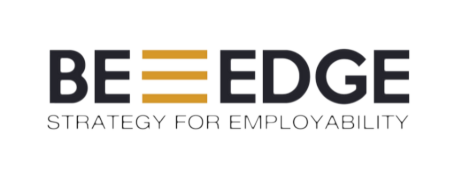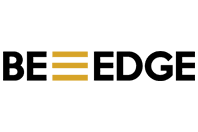
BE-EDGE FUNDAMENTALS: Built-in Employability, Boutique Employability, or Both?
By Julia Ivy
In my earlier post on three starting points for personal strategy coaching, I shared stories of John (a veteran, 47), Tyler (recently graduated Millennial, 22), Dana (approaching graduation Millennial, 21), and David (multidimensional professional, 36) to illustrate that personal strategy coaching must start with the classification of the client’s “what’s next?” dilemma.
The coaching for individuals, whose “what’s next?” question relates to the challenge of mobility, would target the formulation of the personal strategy of built-in employability. A most vivid example of these people is experienced professionals (e.g., veterans) that face a new chapter in their lives but feel loyal to what they did before.
The coaching for people, whose “what’s next?” question relates to the challenge of clarity (of their multidimensional profile), would target the personal strategy of boutique employability. The most vivid example of this is graduating Millennials, and soon it would be Gen Z, who have so many interests and identities that struggle to bring them together.
The coaching for people, whose “what’s next?” question relates to the challenge of uniqueness, would target the personal strategy of “BE” that combines the built-in and boutique employability personal strategies. An example of this group of people would be accomplished professionals or well-educated Millennials with a multidimensional profile, who could find a job in one or more areas based on their dimensions but strive for crafting their own edge.
So, I suggested prioritizing boutique employability in some cases, and built-in employability in others. You almost always combine both of them in this or that proportion for a holistic personal strategy of “BE” boutique differentiation. All three of them belong to the “BE” type of personal strategies but have their nuances. Now let’s find out how they differ from each other.
The Built-in Employability is about UTILIZING
It best fits highly accomplished professionals, including veterans, former athletes, retirees, people returning from maternity leave, or highly accomplished professionals who feel “done” with the previous stage in life and ask themselves what’s next? Let’s take veterans as an example.
Example: Referring back to the post, where I shared a story of John (a veteran, 47) with his challenge of MOBILITY when he gravitated towards being stuck in the comfort zone of his past and was resistant to change. It would be hard to blame him, considering that after investing so much to his own expertise, he felt that was losing his ground.
These veterans have so much invested in their background that they feel resistance and depreciation when they learn that their previous experience does not match traditional jobs of civilian industries. Way too often, the civilian market sends the message that veterans have to dismiss a decent amount of their military-related skills and learn new ones unless they become contractors for the military or work for military-related nonprofit organizations. I can relate to the frustration of these people who, when they found themselves at the “what’s next?” stage of life, feel that they have to start almost from scratch. I also understand their issue of “stickiness” to the safety and confidence that they had in previous occupations.
The coaching approach here would be an audit, assessment, reconfiguration, and utilization of their tremendous investments to personal, social, and professional capital in new settings. Built-in employability means that BECAUSE the veterans’ training and experiences are so different from the traditional civilian ones, they shouldn’t be retrained, and they shouldn’t adjust. They actually would contribute more if they rely on their built-in personal, social, and professional capital instead of trying to dismiss it for the sake of accumulating a new one. We have a similar situation with any professional, who has achieved a lot in her previous industry and is ready for a new chapter in life. Way too often these people have to rewrite their resume in the effort to fit a new job, or they use their networks for help.
Instead of confirming that they have to change and adjust, we say that they should rely on what they have already accumulated, and take a closer and fresher look at the resources and capabilities they possess.
Boutique Employability is about INVESTING
People with the challenge of clarity are a totally different story. Many of them are young, with interests that are perceived by others as “all over the place.”
The example of Tyler from my previous post illustrates this group of people. Their education seems to be misplaced as they don’t seem to be interested in doing what they studied, while they devote their time and energy to totally different things. If you ask them “what do you do?” they struggle to provide a clear answer. They struggle with the “what’s next?” question because they want to be unique. Unlike the previous group of accomplished professionals, these clients have an almost empty investment account and some fuzzy ideas of their portfolio. They have a long list of interests, but none of them seem to be a capital that they can convert into a sustainable source of income.
Thus, the coaching approach for working with Tyler must be about investing in his edge. The work in boutique employability means that we start with elucidating the professional core that would internally resonate with the client’s fuzzy view on his space. Then we work on envisioning a pathway of stepping stones towards this vision, and investing social and professional capital in each of them. Similar to photographers or artists that build their portfolio, and the portfolio indicates the space that they establish, people with the challenge of clarity build a portfolio of projects. To reflect on this portfolio is key.
While all three capital must be taken care of: personal, social, and professional, the major focus of coaching should be on investing in personal capital of clarity and focus. Different mindfulness and gestalt psychology techniques would help. Investment in social capital would follow, and professional capital will be the easiest to invest in if the personal and social capital investments are consistent.
In summary, a purely defined personal strategy of boutique employability is an emergent strategy of conscious actions on investments into stepping stone projects and reflecting on the space that is emerging. The last year of college is a perfect time for them to start building such a portfolio and reflecting on it while investing in their edge within the market.
“BE” as a Combination of UTILIZING and INVESTING
When we work with people whose “what’s next?” question is motivated with the drive for uniqueness, we come to the point that boutique employability almost always involves some portion of the built-in one. The “investment funds” of these people are already sizable, especially in the area of professional capital and of the capability to generate value. Only in cases when audit and assessment of built-in employability prove over investment for the job a person is interested in doing, for the next move, there would be no need for further investment.
Example of David (professional, 36) who decided to bring together his 10+ year expertise in insurance, award-winning experience in brewing, and competitive-level sport. Another example is Dana (22, graduating soon) with a triple degree and impressive co-op and part-time working experience.
The coaching approach for David included the following. We first worked on the visualization of David’s dream space that would combine all three areas he loved. Then we worked on an audit of his available resources and assessed their relevance to a new vision. David found that he already possessed around 80% – 85% of the necessary skills and resources, and he revealed the gap that needed to be invested in. The coaching approach for Dana would need a different proportion of built-in and boutique employability. While she would also rely on the knowledge and skills that she accumulated in college, a co-op program, and part-time jobs, her built-in capital is smaller than David’s, so she would need stronger investment in her social and professional capital.
So, coaching for both David and Dana combined built-in employability with boutique employability, while in different proportions. David might need only one stepping stone in his transition. Dana would need several stones to accumulate the necessary amount of personal, social, and professional capital in order to proceed towards the “what’s next?” stage of life.
When “BE” is a Wrong Personal Strategy
Finally, any of the described above personal strategies would be a wrong approach for those people who are not occupied with the “what’s next?” or who are interested in one-dimensional conventional employability. My post on the strategy behind your personal strategy discusses who fits “BE” personal strategies and who would be better with a conventional approach for positioning in the job market.


